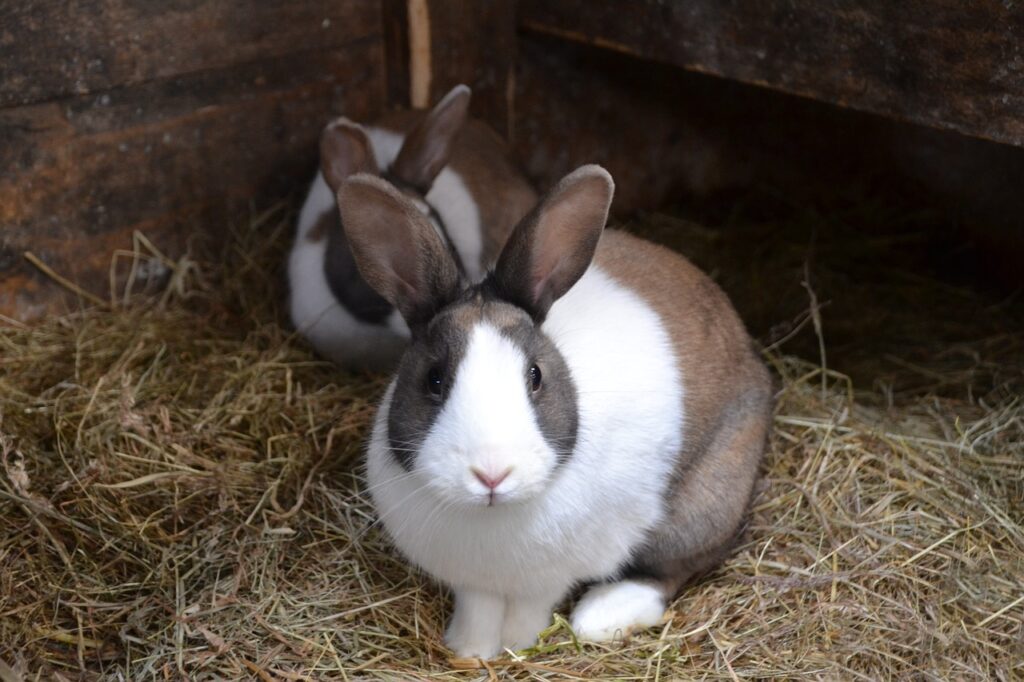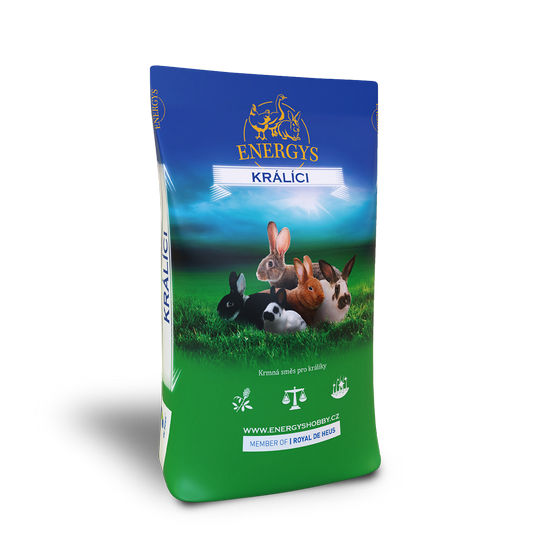Rabbits
Poultry
Laying hens
Quails
Guinea pigs
Pigs
Ostriches
Sheep and goats
Pigeons
Pheasants
Forest animals
Restriction of rabbit feeding
Nutrition is a very important influence on performance and subsequent meat quality. In terms of rabbit nutrition, feed restriction is a frequently used manipulation. By restriction we mean a feeding technique in which the feed ration is restricted in some way. A distinction is made between qualitative and quantitative restriction.
In qualitative restriction, a nutrient in the ration is reduced or omitted altogether. Quantitative restriction, where the amount of feed is reduced, is more common. A special type of quantitative restriction is time restriction, where the time for which animals are allowed access to feed is limited. Restriction can be applied in many ways, such as immediately after weaning and then throughout the fattening period, or with a subsequent ad libitum (unlimited) feeding period.
Quantitative feed restriction leads to slower growth but improves feed conversion (feed consumption per unit gain). However, once rabbits are fed ad libitum again, growth compensation (more intensive growth in the period following the restricted growth) occurs. The effect of short-term but intensive feed restriction can increase feed digestibility in the small and large intestine. Feed restriction during gestation has also been investigated in rabbits, but in these experiments lower birth weights were observed compared to rabbits fed ad libitum. Another proven advantage of restriction is the reduced incidence of digestive problems in rabbits after weaning.
The term indirect restriction may also be used. We consider indirect restriction to be water restriction, which reduces feed intake and slaughter weight, but has been shown to prevent some health problems.

In rabbit breeding, restriction can be encountered in many different forms. Moderate restriction can also reduce intramuscular fat and reduce water loss from meat during cooking. We can say with certainty that this method of feeding reduces mortality and morbidity in most cases and improves feed conversion, but there are still many experiments where this theory is disproved. Therefore, it is important to evaluate to what extent and for how long the restriction should be applied.
Regarding rabbit welfare during quantity restriction, the consequences are still debatable as feed restriction is likely to lead to starvation. However, rabbits can adapt to any form of feeding technique and adapt very well without any signs of aggressive behaviour.
Related posts
10. April 2024
Keeping dwarf rabbits as pets is becoming increasingly popular. It does not require a lot of space and is ideal for people who live in smaller homes or apartments. Dwarf rabbits are also very friendly, so it’s no wonder that people are choosing them for this purpose more and more often. As with all animals,…
30. August 2022
In this article we will discuss several rabbit diseases – ear scab, tyzzer’s disease and heat stress.
24. August 2022
In this article we look at two diseases – e.Coli and enterocolitis.
2. August 2022
In this article we look at two common rabbit diseases, myxomatosis and infectious rhinitis.
13. July 2022
In the following article we will discuss rabbit plague – rhd or vhd (viral haemorrhagic disease of rabbits).
Related products

RABBIT DWART
Complete pelleted feed for dwarf rabbits with high digestibility. It contains a high proportion of fibre (high alfalfa and grass cake content) and a reduced sugar and starch content. Contains flaxseed, which has a positive effect on coat quality. Suitable for daily feeding. We recommend providing rabbits with safe fresh water and hay.

RABBIT CHAMPION
Feed for show rabbits, does not include Coccidiostat. A unique mix significantly supports the quality and growth of fur. Serve when moulting and at least two months before the start of the show season.

RABBIT GOLD FORTE
A premium feed mix in an ideal make up for gestating and breast feeding females. For the intensive fattening of rabbits for a period of up to 5 days before slaughter. It supports fast growth, meat content and an excellent state of health. It contains a coccidiostat which lowers the risk of mortality.

RABBIT KLASIK FORTE
Intended for the fattening of rabbits up to a point at least 5 days before slaughter. Suitable for attaining a high meat content and an excellent state of health. Thanks to its Coccidiostat content it lowers the animals mortality.

RABBIT KLASIK
For the final phase of rabbit fattening, a minimum of 5 days before slaughter. It supports high meat content and excellent taste qualities in rabbit meat. Without a coccidiostat.

RABBIT START
For young rabbits from the start of accepting feed to 4-6 weeks after weaning. The feed helps to significantly lower the death rate in the period around weaning. It contains a raised percentage of fibre and less starch. It does not contain a coccidiostat.
